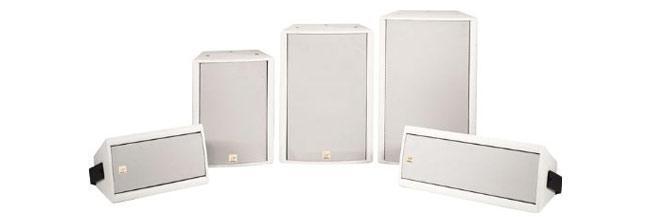
When a PA system isn’t able to properly cover the audience, a common remedy is to add supplemental speakers, frequently called ancillary speakers (ancillary means “providing something additional to the main function”). In some cases, you need to place these speakers far enough away from the main PA that you need to delay their input to keep the sound coherent and time-aligned. Books have been written about when, where, and why you should consider adding delayed speakers to your sound-reinforcement setup, but the majority of it can be broken down to the two most common challenges: distance and angles.
Distance
Distance affects sound in two extremely noticeable ways:
- In accordance with the inverse square law, sound diminishes by half of its volume every time it doubles in distance from the source. In a large venue, the sound pressure level (SPL) required from the speakers at the stage is far too loud for the audience at the front if intended to reach the audience at the rear of the venue.
- High frequencies have short wavelengths, which makes them more susceptible to disruption (diffusion) as sound propagates through the atmosphere. As the distance between the speaker and the listener increases, higher frequencies decrease disproportionately faster than low frequencies, which can make things sound muddy and unintelligible in the back of a long hall or large outdoor venue.
As far back as Woodstock, the common way to address both issues has been to apply additional sets of loudspeakers in the audience to enable the people at the back to have a better listening experience, without splitting the eardrums of those up front.
Angles
Diffusion and absorption not only prevent high frequencies from traveling as far as low frequencies, they also prevent those high frequencies from passing through obstructions and traveling around corners. As a result, areas under balconies (particularly at the back of the room), past doorways, and around corners suffer from a noticeable drop in high-frequency content. You can fix this problem by using supplemental speakers to cover areas that don’t have a clear line of sight to the main PA.
How to Tell if You Need Supplemental Speakers
One of the most effective ways to test your PA system is to play representative material through it and listen in all of the areas that need to be covered. Pay specific attention to spectral balance and intelligibility. Listen with the understanding that when the venue fills with people, the reverberation will be lessened. This natural absorption will help with intelligibility, but it will also absorb high frequencies disproportionately to low frequencies, which can muddy your sound and affect intelligibility. As you walk the venue, be on the lookout for dead spots, where the volume drops significantly, and muddy areas, where the highs roll off. If the variation from section to section of the audience is dramatic, then you’re probably going to want to add supplemental speakers.
Get a Digital Opinion
In addition to the subjective listening method, SPL meters and spectral analyzers can provide concrete data you can use to confirm your perception or make additional adjustments to better tune your PA system. As a general rule, you don’t want to see more than a 6dB variation across your audience space. Running white noise through the PA and using a real-time analyzer (RTA) will also allow you to visually observe frequency imbalances, such as a drop in high frequencies in problem areas.
How to Add Supplemental Speakers to Your PA
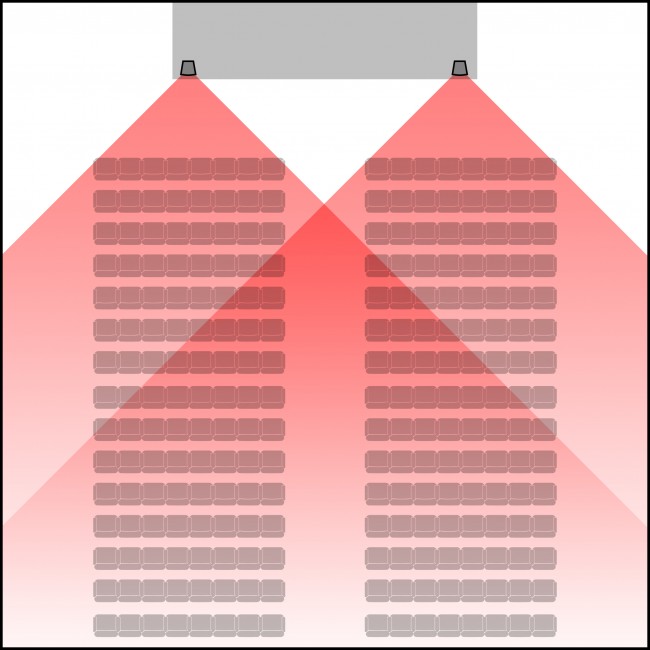
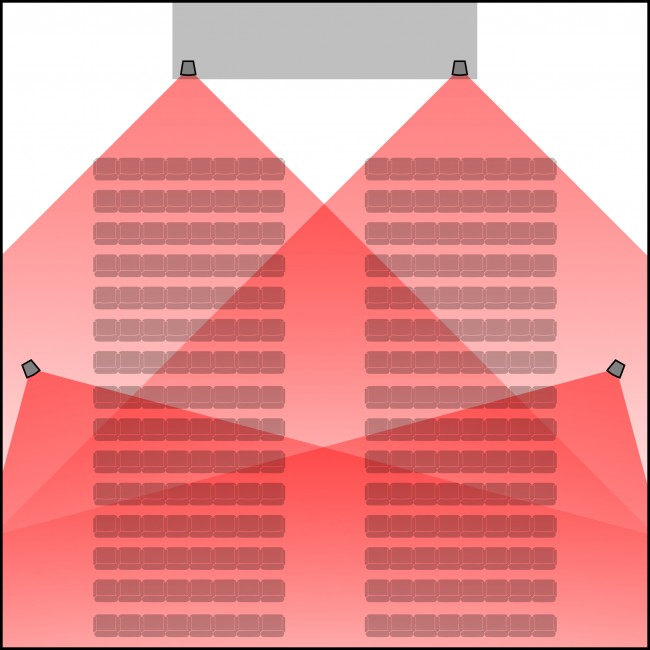
What to Look for in a Supplemental Speaker
If you’ve come to the conclusion that your PA system would benefit from the addition of supplemental speakers, then there are a few things you’ll want to keep in mind as you look for appropriate speakers. Generally your goal is to find a speaker (or speakers) that will cover the desired area in an acceptable manner, meaning it will have frequency, dispersion, and dynamic range characteristics that you might choose if this area were your sole concern. If you do that, then you’ll be off to a good start, but there are a few additional considerations:
- Ideally, your supplemental speakers will be of similar quality to your main speakers. If your PA is a top-of-the-line JBL rig, you probably don’t want to use a cheap speaker as your supplement. Even if you apply equalization to compensate for some of its deficiencies, your results will be far more seamless if the speakers are a better match.
- You may not need low-frequency reproduction in your delay speakers. Usually information below 200Hz will travel far enough and flow around any obstacles enough that the listeners will be satisfied by the main PA without additional drivers.
- Depending on the exact situation, you may only need a fraction of the power (wattage) for your delay speakers compared to your main PA.
Of course, there are always exceptions to these guidelines, so be sure to consult with an experienced sound engineer before making final decisions about how to proceed.
Supplemental Speaker Positioning
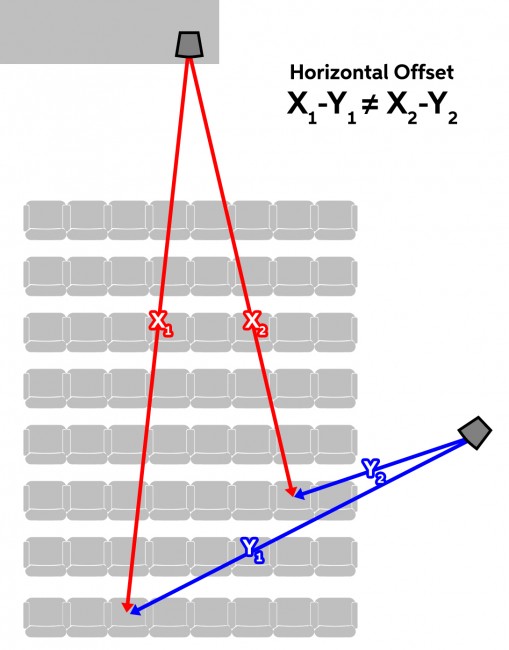
In many situations, the best position for your supplemental speakers will be driven largely by aesthetics and mounting opportunities. For instance, in an under-balcony application, you may need to place your supplemental speakers along the ceiling to maintain sight lines to the stage, and there usually isn’t another mounting surface available unless there are railings or structural supports nearby. If you have flexibility with positioning, it’s best to put supplemental speakers as close to directly in line horizontally with the main speakers as possible. This position will minimize horizontal offset in which the difference in distance between the main speaker and the supplemental speaker varies depending on your position in the audience. However, there are so many exceptions and nuances to this that you may be better off factoring in other considerations. For example, if the under balcony requires eight speakers to cover the area, then clearly their individual positions have to take precedence according to what will get that job done.
Calculating Delay
Why You Need Delay
Once the ancillary speakers are installed and tuned to your PA, you’ll need to time-align them with the main speakers so that sound coming from the delayed speakers arrives at the audience in time with the sound from the main speakers. Otherwise, the difference in arrival time between the mains and ancillary speakers will create sonic problems. The reason you need to delay the ancillary speakers is that the electrical signals from your mixing board will reach both speakers simultaneously; whereas the sound traveling from the speakers near the stage travels through the atmosphere at the speed of sound, which is hundreds of times slower, resulting in a gap of several milliseconds between sources. Several milliseconds may not sound like much, but the results can vary from a slap-back delay to phasing and other effects that greatly decrease intelligibility.
Adding Delay
There are several ways to add delay to the ancillary speakers, depending on your PA system. Many amplifiers and powered speakers designed for complex, multi-speaker setups come equipped with digital signal processing (DSP) that includes onboard speaker delay. Often, this delay allows you to simply enter in the distance between speakers, calculating the delay offset automatically. More sophisticated systems even include a measurement microphone to automatically calculate the distance, set delays, and even adjust levels and frequency for you.
Manually Calculating Delay
If you need to calculate delay manually, then there’s a straightforward formula you can use to get pretty close:
Ds = X/C*1000
Ds is the delay in milliseconds.
X is the distance from the main speakers in feet.
C is the speed of sound in feet/second. While the speed of sound is technically 1126 feet/second at sea level (assuming a temperature of 68 degrees Fahrenheit and dry conditions), elevation, temperature, and humidity all affect the actual speed at which sound travels. Many live sound engineers ballpark this figure at about 1200 (though other base calculations exist).
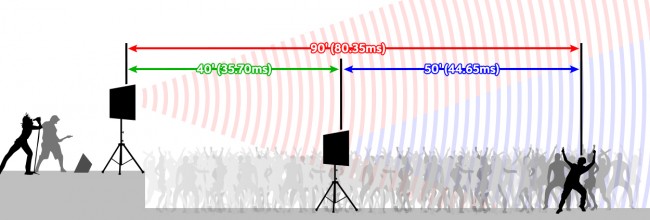
This formula allows you to calculate distances as far off as delay stacks 140′ from the main stage at an outdoor concert (116.7ms = 140/1200*1000) or subwoofers a mere 15′ in front of the main stacks (12.5ms = 15/1200*1000). No matter what, this delay figure is somewhat approximate. As long as the delay is close, it should work well enough, but you may have to experiment slightly by listening.
Other Considerations for Setting Delay
Even assuming you can perfectly calculate the delay time for each of your delay speakers, there are a few additional considerations you’ll want to observe when setting up your PA.
The Haas Effect (Precedence)
The human auditory system is highly complex and extremely sensitive, and our brains perform impressive calculations reflexively at all times to shape the world around us. One of these calculations is called the Haas effect, in which a minute difference in timing creates a perception of directionality. You can use this to your benefit by deliberately delaying balcony speakers and side fills by a few extra milliseconds to create the illusion that all of the sound the audience hears is coming from the stage.
Correcting Tonal Imbalances
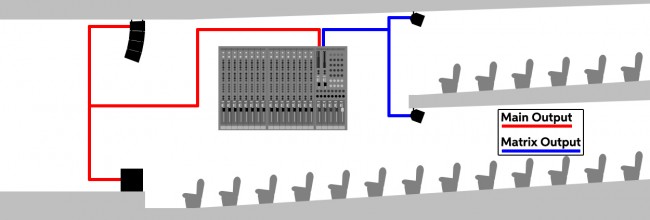
We’ve already discussed that one of the uses for delayed speakers is to make up for the decrease in high frequencies that occurs as sound travels over great distances. Depending on how far back your delayed speakers are from the main speakers, you may only need to reinforce highs or mids/highs. If you’re already dealing with a large buildup of certain frequencies or sounds, you may want to consider creating a separate delay mix, emphasizing the vocals and other key instruments that might otherwise get lost in the ambience. Most modern mixers allow for discrete outputs of individually created mixes using anything from aux sends to subgroups to, in many cases, matrix outputs.
Stereo or Mono?
One more consideration is whether you want to retain a stereo image in your delay speakers. When you use delayed speakers in a large field to extend the throw of your PA, it’s pretty easy to preserve stereo. That becomes a lot more challenging under a balcony in a hall, where stereo separation can cause phase problems at worst or can simply provide a different listening experience to different parts of the audience. Nonetheless, it’s possible to set up stereo balcony speakers, if you’re careful about speaker placement.
What’s the Next Step?
Whether your setup is large or small, you might be surprised how affordable it can be to acquire the ingredients necessary to add delayed speakers to your PA. If you have questions or would like more input for your circumstances, give your knowledgeable Sweetwater Sales Engineer a call.


